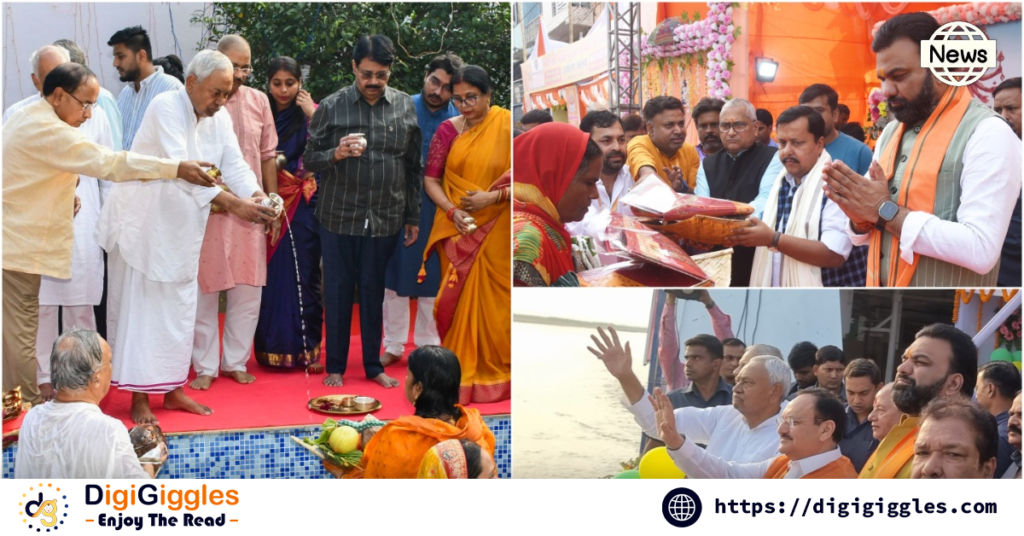
As the vibrant Chhath Puja celebrations unfold across India and beyond, millions gather to honor the Sun God and Chhathi Maiya, expressing deep gratitude and seeking blessings for health, prosperity, and family well-being. This ancient Hindu festival, predominantly observed in Bihar, Jharkhand, and Uttar Pradesh, is marked by meticulous rituals and heartfelt prayers by devotees, who fast and perform ceremonies at dawn and dusk along riverbanks and water bodies. In Patna, the capital of Bihar and a central hub of Chhath Puja, the festivities were amplified with the participation of Bihar’s Chief Minister, Nitish Kumar. On the banks of the Ganges River, Kumar joined thousands of devotees who gathered to pay homage to the Sun God, bringing a sense of unity and community to the occasion. Dressed in traditional attire, he interacted with worshippers and extended his good wishes to them, stating, “I feel blessed to be here with all of you. May Chhath Maiya fulfill everyone’s prayers.”
The elaborate festival, spanning four days, has a unique blend of spiritual austerity and community warmth. Devotees fast rigorously, abstaining from food and water, and prepare ‘prasad’ offerings, including ‘thekua,’ a special sweet made of wheat flour, jaggery, and ghee. They create carefully arranged bamboo baskets filled with fruits, sugarcane, and coconuts, presenting these offerings to the setting and rising sun. The rituals of Chhath are often passed down through generations, as families gather to prepare and perform these age-old customs together. Chhath Puja has gained recognition worldwide, with communities of Indian origin in countries like Nepal, the United States, the United Kingdom, Canada, and the United Arab Emirates now celebrating the festival. In cities with large Indian diasporas, such as New York, London, and Dubai, dedicated riverbanks, lakes, and makeshift ghats have been set up, allowing devotees to honor the traditions far from home. The festival serves as a cultural bridge, connecting generations and creating a sense of belonging and pride among Indian communities abroad.
In India, local governments have extended support by organizing clean-ups along rivers and enhancing security to ensure a safe and joyful celebration. In Patna, the administration increased police presence and deployed medical teams at ghats, while volunteers from various organizations were seen helping devotees with offerings and assisting with safety measures. Kumar expressed appreciation for their efforts, remarking, “This event brings us all together, and I am grateful to those who work tirelessly to make it successful.” As Chhath Puja approaches its conclusion, the event embodies resilience, faith, and the collective spirit of communities who come together in celebration and devotion. For many devotees, the festival is a time to connect with their roots, whether they are in their homeland or on foreign shores. In a world where distance often separates families and friends, the global embrace of Chhath Puja reflects the enduring power of cultural traditions to keep people connected, grounded, and hopeful.
In Bihar and around the world, Chhath Puja continues to grow in significance, enriching lives and bridging the cultural gap for millions who celebrate its message of gratitude and togetherness.